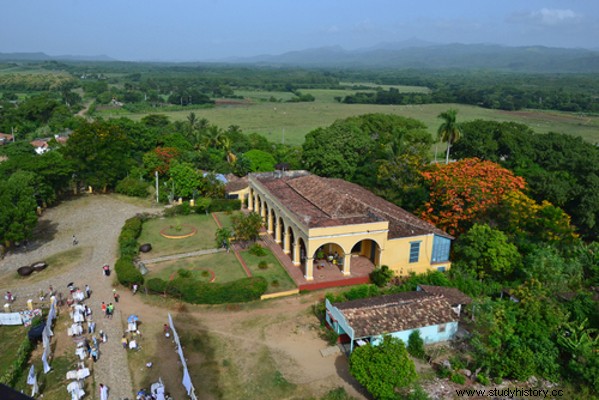
By Me. Cláudio Fernandes
In addition to the metal exploration system that characterized the beginning of the Spanish colonization in America, whose main models were the divisions and the orders , there was also the assembly of the plantation , that is, agricultural monoculture on large tracts of land that became known as hacienda .
These monocultures generally focused on tropical and semitropical products, such as corn and sugar. The main features of haciendas in the regions of Hispanic America were compulsory, slave labor and the authoritarian character of the owner in relation to the management of his hacienda. This system presented many similarities with the Brazilian sugar mills. Like these, the haciendas they met the demand for agricultural products and fueled trade within and outside the American continent. However, the haciendas they had a stronger relationship with intercolonial trade, that is, between the Spanish colonies themselves, than with the metropolis.
In addition, indigenous slavery was used on a larger scale than African slavery, with the exception of Cuba, which had a strong presence of black slaves. Researcher Eduardo Neuman, in a paper presented at the National Association of Researchers and Professors of History of the Americas (ANPHLAC), discusses the presence of compulsory indigenous labor in haciendas:
“Agricultural activities depended equally on indigenous and mestizo work. Faced with the Hispanization of the countryside, generated by the agrarian needs of colonization, the hacienda prevailed. A rural property with a self-sufficient character, but aimed at supplying mining centers and cities, whose obtaining labor could come from different recruitment systems. The hacienda mainly attracted indigenous people who were far from their communities or deprived of land, who became known as resident peão or acasillado. As a complement to the tasks carried out on rural properties, obrajes, establishments intended for the manufacture of fabrics, functioned.” (Neuman, Eduardo. Work in Spanish America:wages, servitude and slavery. ANPHLAC)
Furthermore, the relationships woven between the mining exploration systems and the landowners who controlled the haciendas process produced the foundation of regional oligarchies in Hispanic America. One instance depended on the other, either because of the exchange of raw materials, or because of the offer of credit, as researcher Leslie Bethell emphasizes:
“The foundation of this oligarchy represented the merger of large rural property with the monopoly of capital gained in the mining and commercial sectors. Credit became available to owners of large landholdings through ongoing marriage alliances that linked their children to wealthy miners and merchants, and through the accumulated land itself. .” (Bethell, Leslie. Colonial America, vol. VII, p. 185.)
*Image credits:shutterstock and Maisna.
